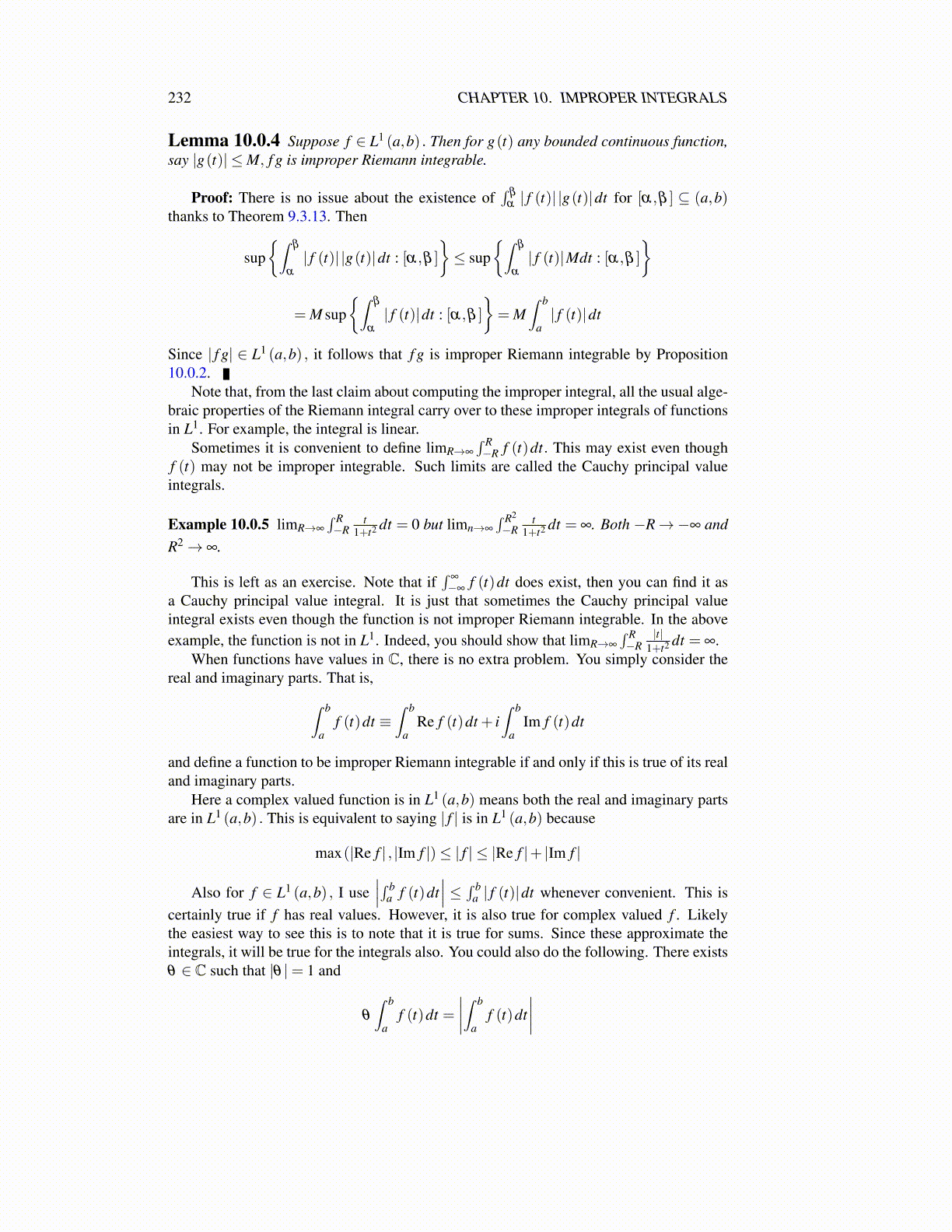
232 CHAPTER 10. IMPROPER INTEGRALS
= e(n)+E (n)+∫ bn
0
11+ t2 dt−
∫ bn
0e−bnt (cosbn)+ t (sinbn)
1+ t2 dt
= e(n)+E (n)+∫ bn
0
11+ t2 dt−
∫ bn
0e−bnt 1√
1+ t2cos(bn−φ t)dt
where φ t is a phase shift. This is because(1√
1+ t2,
t√1+ t2
)= (cosφ t ,sinφ t) some φ t
so the formula for cos(bn−φ) is used. This last integral satisfies∣∣∣∣∫ bn
0e−bnt 1√
1+ t2cos(bn−φ t)dt
∣∣∣∣≤ ∫ bn
0e−bntdt ≤ 1
bn
Therefore, include it in E (n) and it follows that∫ bn
an
sinxx
dx = e(n)+E (n)+∫ bn
0
11+ t2 dt
where limn→∞ (e(n)+E (n)) = 0. Taking a limit,
limn→∞
∫ bn
an
sinxx
dx = limn→∞
(e(n)+E (n)+
∫ bn
0
11+ t2 dt
)= π/2 (10.2)
A much shorter way to verify this identity is in the exercises but it depends on a theoremwhich has not been discussed yet and to use it, you need to know the existence of theDirichlet integral which is obtained here as part of the argument.
For I an interval let XI (t)≡{
1 if t ∈ I0 if t /∈ I .
Lemma 10.1.2 Suppose f is Riemann integrable on [a,b] . Then for each ε > 0, thereis a step function s which satisfies |s(x)| ≤ | f (x)| and∫ b
a| f (x)− s(x)|dx < ε
Also there exists a continuous function h which is 0 at a and b such that |h| ≤ | f | and∫ b
a| f (x)−h(x)|2 dx < ε
Proof: First suppose f (x)≥ 0. Then by Theorem 9.3.10, there is a lower sum L( f ,P)such that ∣∣∣∣∫ b
af dt−L( f ,P)
∣∣∣∣≤ (U ( f ,P)−L( f ,P))< ε
Let s correspond to this lower sum. That is, if L( f ,P) = ∑mk=1 mk (xk− xk−1) , you let
s(x)≡ ∑mk=1 mkXIk (x) where I1 = [x0,x1] , Ik = (xk−1,xk] for k ≥ 2. Then∫ b
a| f (x)− s(x)|dx =
∫ b
a( f (x)− s(x))dx =
∫ b
af dt−L( f ,P)< ε